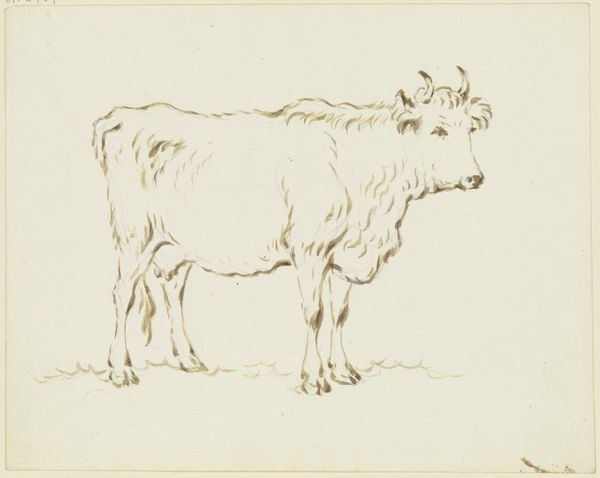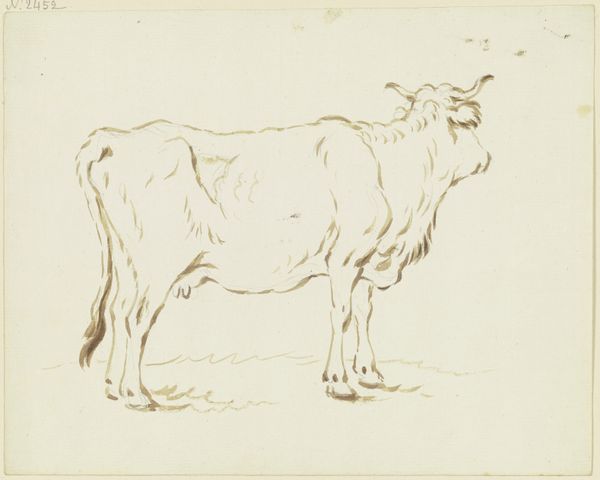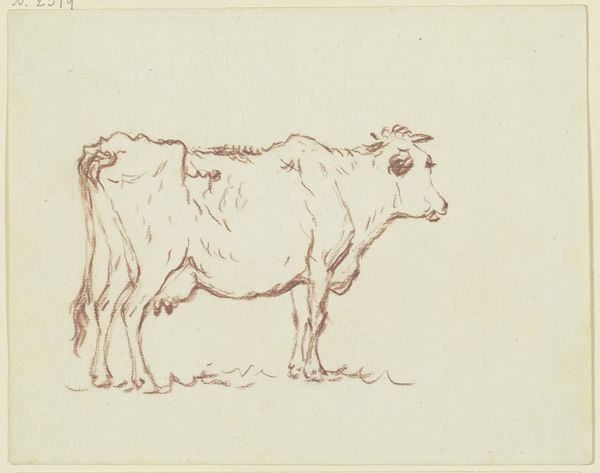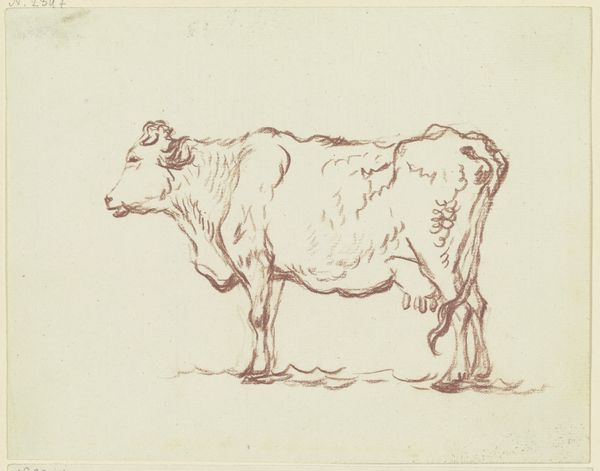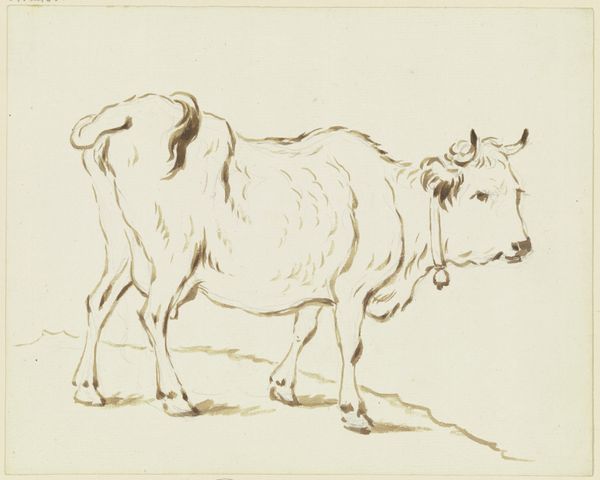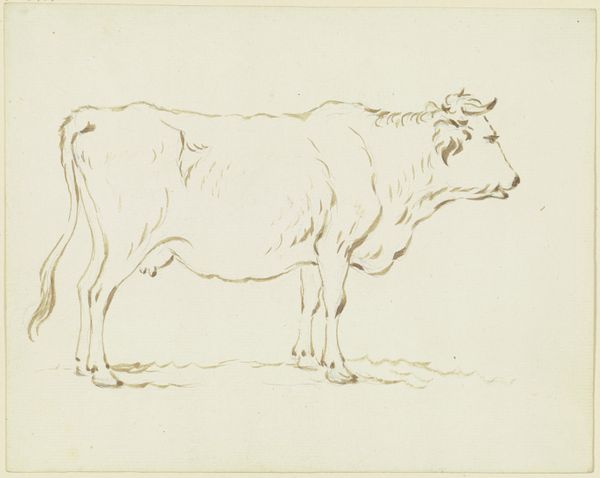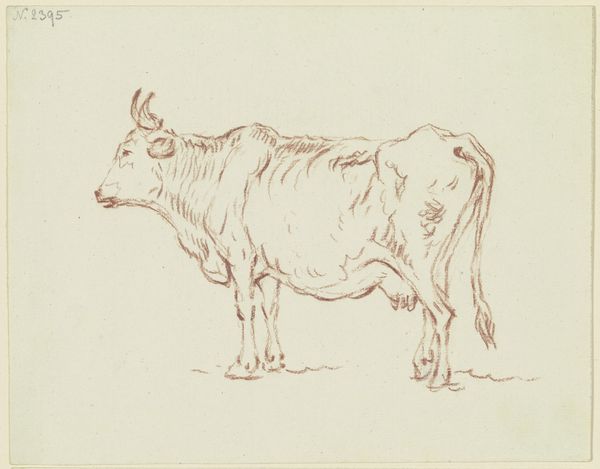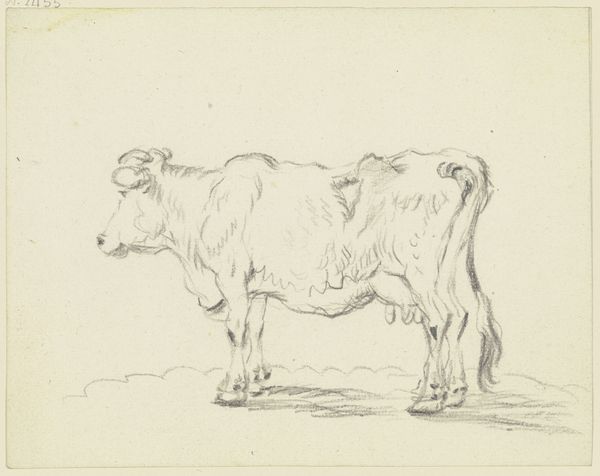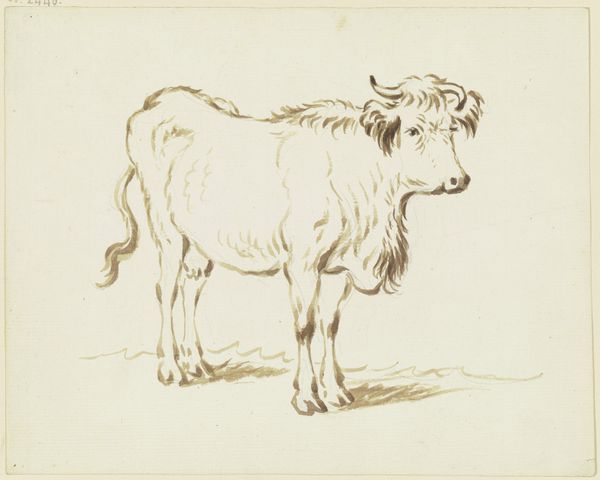
Stehende Kuh nach rechts, eine große Glocke um den Hals gebunden
0:00
0:00
drawing, ink, graphite
#
drawing
#
landscape
#
figuration
#
ink
#
graphite
#
realism
Copyright: Public Domain
Editor: This drawing, rendered in ink and graphite, depicts a cow standing in profile, gazing right. It is titled "Stehende Kuh nach rechts, eine große Glocke um den Hals gebunden," or "Standing Cow facing right, a large bell tied around the neck." It looks like a study; the details feel intimate. What catches your eye about this particular cow? Curator: The bell is indeed significant. While ostensibly utilitarian, its presence transforms the animal into a cultural symbol. The bell served practical purposes – helping to locate grazing animals. But think about it… sound, memory, identity. That single bell becomes shorthand for entire landscapes. How does the sound of a cowbell resonate within different cultures? Editor: That's a beautiful point. You’re right. I think of storybook alpine meadows. Is that intentional on the artist's part? Curator: It might not be a deliberate cultural reference, but the artist certainly captures the visual language we've inherited. Think of a simple countryside or a place of idyllic beauty: do we bring such landscapes along when we contemplate an artwork like this? What is your reaction when I say this to you? Editor: I see how the cow becomes something beyond just livestock. Now I am really intrigued to imagine a cowbell when seeing a landscape! Curator: Exactly! It underscores how artistic expression weaves together individual observation and collective memory. These rural objects hold layers of meaning beyond the immediately visible. The cow, coupled with the bell, whispers stories about humanity’s long relationship with animals and the land. Editor: This has totally changed how I'll view images of rural life from now on. It's incredible how one symbol can unlock so many layers of meaning. Curator: Precisely. Symbols connect us across time and culture, enriching our understanding of both art and the world around us.
Comments
No comments
Be the first to comment and join the conversation on the ultimate creative platform.


